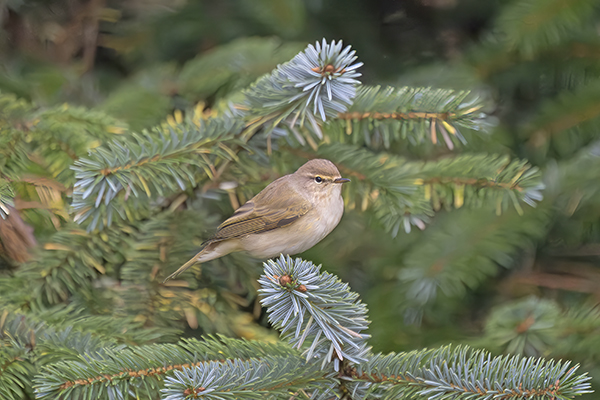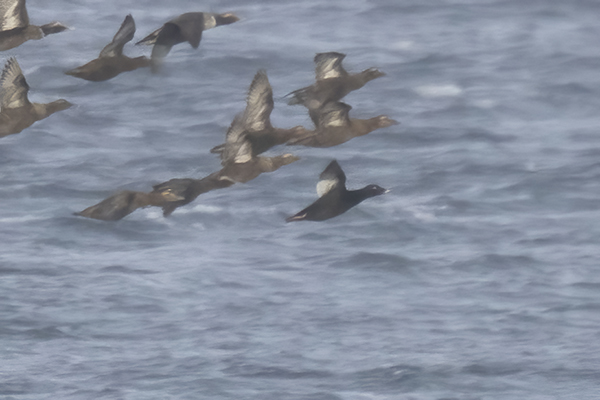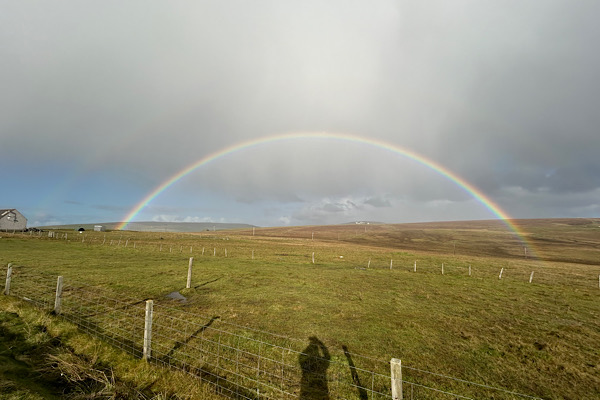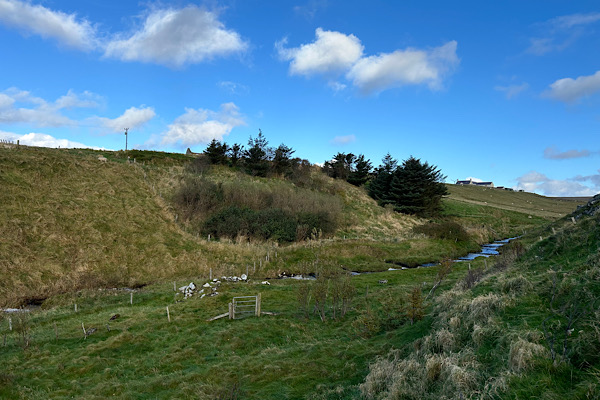The rest of my trip finished as it started. Lots of walking in high winds and rain. The rain was so heavy on occasions that I had no option but to give up & go back to the accommodation to sit it out. Wednesday was no exception and after sitting in most of the morning I decided to drive the short distance to Funzi willows once the rain had eased from torrential to just ‘heavy’. Thermal imaging has become very popular now in general birding after starting to gain recognition among ringers for pinpointing birds on the ground at night allowing them to be ‘lamped’ and caught in a landing net. Its vastly increased the catch rate of scarce to catch birds such as Skylark, Woodcock & Jack Snipe and will help greatly with our understanding of the movements of these birds and their winter site fidelity - already ringing recaptures are showing winter on winter site fidelity for Woodcock & Jack Snipe. Amyway, another digression, I’ve got a thermal imager and it’s proved remarkable at picking up birds that can’t be seen through the binoculars. This Woodcock in the plantation above Feal Burn was one such bird. I wouldn’t have seen it if it wasn’t for the thermal picking up a heat signal!
It also helped at Funzi willows where, thanks to the thermal, I tracked down three heat sources one of which was my 1st Fetlar Barred Warbler! Another proved to be this rather smart looking Siberian Chiffchaff.
Compare this to the regular collybita and more easten but not quite east enough abietinus type from N and NE Europe that were knocking arond the Feal plantation. The Siberian bird is very monochromatic without a hint of yellow or green whereas the collybita shows typical Chiffchaff green / yellow colouration and the abietinus is somewhere in between.
 |
| collybita Chiffchaff |
 |
| abietunus Chiffchaff |
Returning to the car I realised I’d missed a call off Paul Macklam about a really good looking candidate for Eastern Yellow Wagtail he’d found near Aith Bod! Within a couple of minutes I arrived on site to find Paul standing looking in to a nearby field where he’d last seen the bird. He showed me the photos on the back of his camera & it looked spot on as did the call he’d heard it give. A quick search, in the by now torrential again rain, and we relocated it a couple of hundred metres up a small burn. I tried to get a sound recording but unfortunately there was to much wind noise but, by some miracle, Jane Turner managed to isolate some part calls by filtering out the wind noise. Cheers Jane! She sent me photos of the sonograms compared to Eastern Yellow Wagtail & Paul will submit these as part of his submission. Unfortunately the bird was never seen again and the burn it was found beside burst its banks in extremely wet overnight weather. In fact much of Fetlar was flooded by Thursday morning snd Feal Burn had expanded to fill the whole valley!
 |
| Rough seas viewed from Houbie |
 |
| Shetland Wren sheltering from the rain beneath a gunnera leaf |
Arriving on Shetland mainland in the forecast gale force winds it was obvious birding was going to be difficult. I decided to try for the White-winged Scoter at Wadbister and initially got distant views but when I returned a bit later it showed much better - certainly through Adrian Kettle’s scope! I also met Mike Edgecombe at the site and as we were chatting the flock of Eider and the scoter took off allowing a distant record shot.
 |
| White-winged Scoter in flight with Eider |
 |
| Same photo above cropped right in to show pink bill of White-winged Scoter rather than yellow of Velvet Scoter |

News that Cliff & Ollie had found a Golden Oriole in the community woodland at Brae had us heading g that way as both Mike & I were staying in Brae that night albeit in separate hotels. No luck with the Oriole although we did manage to see two Hawfinches that were furtively feeding on the ground beneath various bushes! Mike invited me to join him for dinner and after a nice meal & a pint I headed back to get some needed sleep.
My last morning dawned slightly misty but calm and after a huge breakfast I decided to head south and try Quendale for a Great Grey Shrike that had been showing g unbelievably well feasting off a mouse it had ‘lardered’ the previous day. I love shrikes & Great Greys in particular. My 1st Great Grey Shrike was self found, as a young teenage birder, in Linneage Woods, Suffolk where we lived at the time. Unfortunately they’ve become an increasingly scarce winter visitor to the UK and it’s been several years since I’ve seen one and even longer since I’ve seen a Cheshire one! In fact in recent years I’ve seen more ‘isabelline’ shrikes than Great Grey.
Arriving at Quendale on a by now beautiful sunny day I had a search around the mill and farm buildings with no success. Bumping into old friend and Shetland resident Lee Mott we were standing chatting when he suddenly saw the shrike fly up into a sycamore. From there it flew across the road and perched up on a strategically placed fence post the farmer had left for this very occasion!
Saying my goodbyes to Lee I left for the airport but just had time to calm into Grutness to see the nice flock of 38 Long-tailed Ducks in the bay! Another autumn trip to Shetland finished for the year. Even though good birds were few and far between it was great to meet up with other friends I hadn't seen for a while.








































































































